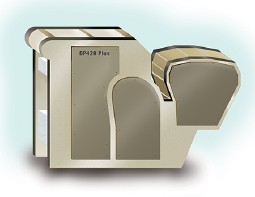More Print Tips
- • Maximum Impact: Is it Best to Send a Postcard or a Letter?
- • Drive Rapid Response to Your Direct Mail: 10 Pro Tips
- • The Usefulness and Utility of Print Marketing
- • Boost Sales with Brochures
- • 5 Opacity Tips You Should Know
- • The Window to Marketing
- • Profitable Postcard Marketing: Finding the Right Frequency
- • 3 Fundamentals for Nailing Your Direct Mail Marketing
- • Picking the Perfect Paper
5 Rules for Readability with Type
We've all been there. You're driving down the highway when a stunning, colorful billboard catches your eye. The type, however, is white on yellow, in all caps, and so tight that still to this day you have no idea what that billboard said.
Good typography in your marketing materials keeps both "readability" and "legibility" in mind. While readability means exactly what you think it means: easy to read and understand, legibility means having sufficient contrast with a background (as in, not putting white on yellow on a billboard).
It's important for you to understand what things affect the readability of your type. Scientists have measured eye movement and comprehension and verified these five rules that you should use when selecting type font and size for your marketing materials.
Keep typography simple.
Selecting one font family for your entire printed piece makes it easier for the eye to decipher when glancing across the page. Choose a font that has many different weights, sizes, and styles to use for headings, quotations, or to emphasize a particular section. Build variety playing with these variables instead of switching between multiple font families.
Stay consistent.
Consistency will lend authority to the look of your piece and will become part of your branding for that particular item. Therefore, be sure that all of the headers look the same, including size and font type. The same goes for sub-headers, pull-quotes, etc.Use upper and lower case.
Using standard upper and lower case letters make the wording easier for people to read. This format is also what readers are familiar with and expect to see. While you can use all capital letters for emphasis in rare cases, it is not a good idea for regular print. This rule has more to do with how people read then the look or style of your design.Keep lines short and add white space.
People tend to read three to four words per eye movement. It's a good rule of thumb not to have your reader make more than two eye movements per line, so limit your lines to six to eight words. Flyers, billboards, and posters will work best with short, bulleted points and plenty of white space.Use serifs.
Serifs are the little, extra strokes or flourishes at the end of the main strokes of a letter. They flow well from one letter to the next, reducing eye fatigue. Like the rest of our bodies, our eyes get tired when they have to do a lot of heavy lifting. Long printed documents such as books or sizeable reports are easier to read when serif type fonts are used.
Your readers can catch every word when you consider the readability of your type in your next printing project.


Getting It Printed: How to Work With Printers and Graphic Imaging Services to Assure Quality, Stay on Schedule and Control Costs (Getting It Printed) 4th Edition
by Eric Kenly
Designers can save time, money and frustration with this essential guide to printing. Covering all of the topics that have made it a popular title for years, along with the latest developments in the industry, Getting It Printed, 4th Edition features: A comprehensive look at how to work with printers - everything from estimates, pricing and negotiating to trade customs and quality guidelines; Easy-to-follow explanations of the top printing processes and techniques; All of the information designers need to choose the right papers and inks for their projects; Hard-to-find knowledge about proofing, output and colour; Whether they're independent, in-house or students, designers will want to have this book at hand. It's the ultimate printing resource.



Share this